Museumeiland 1, 9711 ME Groningen
Netherlands.
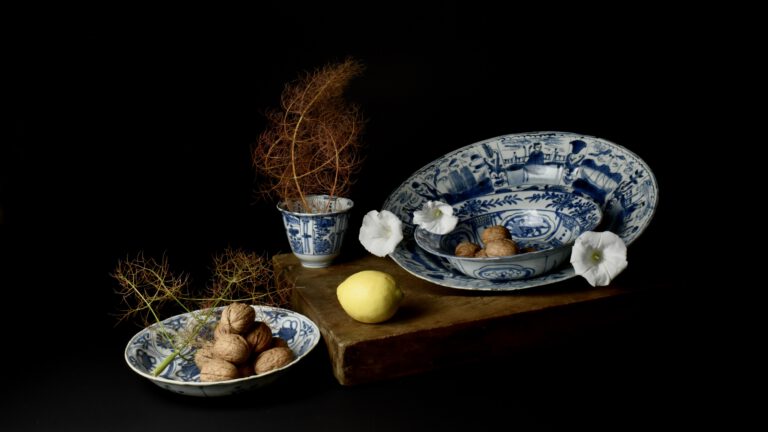
Join Our Mailing List Don't miss our website updates.
If you would like to be notified when our website is updated, do subscribe to our Newsletter and we will send you a notification when the website is updated. As well as receiving an email when the website is updated, there are also notifications and reviews of Books, Museum exhibitions etc. We normally send 12 or so emails a year.
Just enter your email address and click on ‘Send a Message‘.
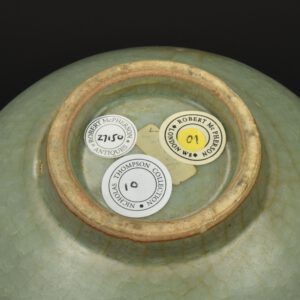

Nicholas de la Mare Thompson (1928-2010)
Nicholas de la Mare Thompson, the grandson of the author Walter de la Mare spent his career in publishing. He started at Nesbit where he was editor of the Janet and John series of children’s books but not all of his career was so safe. He wrestled with W.H. Smith over the content of Madonna’s raunchy Sex book on behalf of Paul Hamlyn’s Octopus Group and defeated Margaret Thatcher over Spycatcher. He could not bare dogma or hypocrisy.
It was hardly surprising that as a committee member of the O.C.S. he had his own ideas. He read and could recite great swaths of the articles of the Society, he used this not to attack but to stimulate debate. He approached the Society in the same way as he approached his understanding of Chinese ceramics, by stripping it down and starting again using clear empirical thinking. He was very concerned the Society was open to all and was run for the benefit of all members.
Nicholas came from a family of collectors, his love of oriental ceramics was broad but his focus was on early monochromes, especially those from the Song dynasty. He bought what he loved, what he thought had merit, not what was said to be good, and certainly not anything because it was fashionable. He didn’t have a stamp collectors’ approach, filling in the gaps of pre-existing ordered collection, rather he would react to an object, feeling it was right for his collection. Sometimes he wasn’t sure if it was right for his collection or not. He would then “borrow” pieces and live with them, other times he would ask his wife Caroline, who’s eye he trusted, if he should keep the piece or not. He was amused because I was often able to know if he would keep a piece before he did. We discussed “pots” endlessly, he loved to talk about ceramics with a wide variety of people and enjoyed the company of others on O.C.S. trips as well as in discussion groups or anywhere else. Later on he combined his love of Chinese ceramics with his love of books by extending his library to include rare early books, he used these to trace the development of collecting and scholarship in the 19th and early 20th century. He was fascinated by earlier scholarship, what was not understood but also what they understood, and we have lost. He was always reading and wanted to know more right up to the end, he didn’t see impending death as a barrier to knowledge or indeed collecting. The week before he died he questioned, if only for a second, whether it was too late to buy another pot for the collection. He concluded it was not, he was a true collector.
Nicolas died on the 25th of April 2010 at the age of 82 after living with cancer for two years. He leaves behind his energetically supportive wife Caroline and his three children. He was a kind, gentle and incredibly civilised man with a very sharp mind and dry sense of humour, he was passionate about the Society, its aims and its members. He was an incredibly supportive and thoughtful friend and will be missed very much.
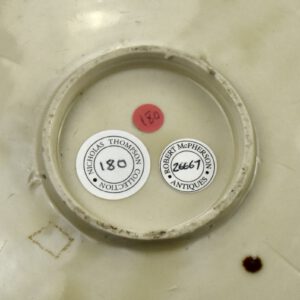
|
||||||||||
|
||||||||||
|

This beautifully illustrated and scholarly book presents the Frelinghuysen collection of Chinese and Japanese export porcelain. It is the first major publication to consider Chinese and Japanese blue and white together.
This extraordinary collection, assembled carefully over fifty years, features an exceptionally wide array of Asian blue and white porcelain – that most ubiquitous and influential of all ceramics. Ranging from Chinese pieces specially made for Portuguese traders in the 16th century to late 19th century commissions for the Thai royal court, the collection also includes numerous Chinese classics from the era of the European trading companies and a notable selection of Japanese export porcelain. In its vast scope it speaks of the diverse impulses and historical forces that propelled the trade in Asian porcelain and provides a lens through which to view the interaction of East and West from the early modern age to the dawn of the 20th century.
More than 300 pieces from the collection are illustrated and discussed in full and another 250 are illustrated in a compendium, all divided into thematic chapters that reflect the many ways Chinese and Japanese porcelain has been traded, collected and lived with around the world. Essays by William R. Sargent, former Curator of Asian Export Art at the Peabody Essex Museum, and noted armorial porcelain authority Angela Howard, precede the thirteen chapters, which include Faith, Identity, For the Table, To European Design and Made in Japan. Great rarities are featured alongside small, amusing pieces and the many export porcelains made to elevate the practices of daily life.
With its strict adherence to blue and white porcelain, the collection intensifies our focus on forms, patterns and designs, gathering together wares that are often considered only separately for study while also covering areas of little recent scholarship, such as the Thai market material. The specialized reader will find references to the latest research while the more general reader will appreciate a comprehensive overview of Asian export porcelain. There has not been a significant survey of either Chinese or Japanese blue and white since the 1990s, and they have never been considered together in a major publication.
One of of number of pieces illustrated in this book that come from Robert McPherson Antiques :
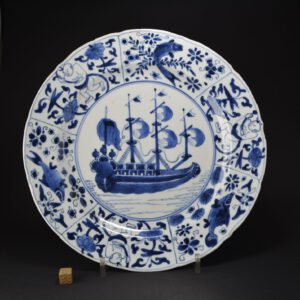
A rare Kangxi blue and white porcelain ‘ship’ dish c.1690-1720. This large Kangxi dish depicts a Western sailing ship, perhaps a V.O.C. (Vereenigde Oost-Indische Compagnie) trading vessel off the Chinese coast. This early depiction of Western ship is unusual in that the center of the dish is devoted entirely to one ship. Earlier depictions, such as those from the ‘Swatow’ kilns in Fujian, show European trading vessels as part of a complex design. Clearly this depiction is for a Westerner connected with trade in China and although rare they do occasionally show up in Dutch collections (see references). The border is of fish among aquatic plants and boys among scrolling lotus, the base has a ‘fu’ (happiness) mark.
Condition : In good condition, there are several rim shallow chips mainly confined to the back rim. Approximately 1/3 of the rim has been very lightly polished, it is very difficult to see but we have photographed it. Some fritting.

Regina Krahl (author)
This Shang Shan Tang collection is one of the rare assemblages of Chinese ceramics specialising in Yaozhou wares. With over a hundred examples, it is very likely the largest repository of its kind; covering an extremely wide range of Yaozhou artefacts of outstanding quality, including both classic types and highly rare specimens, it is uniquely suited to illustrate the kilns’ history. This catalogue covers extremely rare black and white and celadon-green wares samples of Tongchuan kilns made Yaozhou wares from the Tang dynasty and Five Dynasties. This catalogue also includes a magnificent and wide range of Song’s pieces such as the most iconic dishes and bowls with carved nature motifs and combed details, which feature peony and other flower patterns, ducks, fish and conch shells among lotus or waves; and with similar molded designs of flowers, boys among flowers, or fish among waves. This catalogue is one of the most important reference books for Yaozhou wares and is a must for collectors and connoisseurs of Yaozhou wares to own it.
Text in English and Chinese.
Publisher: CA Book Publishing
ISBN: 9789887608905
Number of pages: 228
Weight: 1917 g
Dimensions: 330 x 256 mm
When Frits Lugt (1884-1970) and his wife Jacoba Klever (1888-1969) decided to present their collections in the Hôtel Turgot in Paris, Chinese porcelain ranked among their priorities. They intended to give the French public an impression of Dutch Golden Age interiors and a porcelain cabinet had traditionally been part of Dutch material culture.Frits Lugt started assembling his Chinese porcelain collection when he lived in the Netherlands. After the Second World War, the couple settled in Paris, and Lugt continued his acquisitions from dealers or at auctions, in France and England.

He bought a variety of pieces, either made for export or for domestic Chinese use. The result, permanently exhibited in the Fondation Custodia, is a small but exquisite collection of high-quality Chinese porcelain, ranging mainly from the 16th to the 18th centuries. It reflects the Dutch preference for Kraak, Transitional and Kangxi porcelain, but a few unusual or even unique non-export porcelains are also on display. Almost all of these pieces are decorated in underglaze cobalt blue. Three Japanese works are included to complete the collection.
The directors of the Fondation Custodia who succeeded Frits Lugt have added a number of porcelains to the collection. Ger Luijten acquired some items that he deemed missing, for example a complete garniture and a large Kangxi jar, plus an astonishing piece of Chine de commande: a trompe-l’œil plaque which imitates with extraordinary fidelity a framed Dutch print or drawing.
It was also Ger Luijten who set up the project for a catalogue raisonné of the Fondation Custodia’s collection of Chinese porcelain. This was to replace the small publication of 1981, illustrated mainly in black and white and written by Daan Lunsingh Scheurleer. This update was both necessary and possible thanks to the important scientific progress made in recent decades.

In this new catalogue, written by Christiaan J.A. Jörg, Dutch specialist on Chinese and Japanese porcelain, each of the 125 pieces is described in detail and placed in a scholarly context. Special attention is paid to iconography, inscriptions, and marks. A longer, informative essay elaborates on the history of the collection and shorter essays introduce each of the six sections into which the catalogue is chronologically divided. Every object has been photographed and reproduced from multiple angles, including the base that often reveals a lot of information about their manufacture.
Christiaan J.A. Jörg
Chinese and Japanese Porcelain in the Frits Lugt Collection
Paris, Fondation Custodia, 2023
272 pages, c. 430colour illustrations
28 × 25cm, hardcover, in English
ISBN 9 782958 323431
45,00 €
https://www.fondationcustodia.fr/Publication-of-the-catalogue-raisonne-of-Chinese-porcelain-in-the-Frits-Lugt
An Excellent Book a must for anyone interested in Transitional Porcelain.
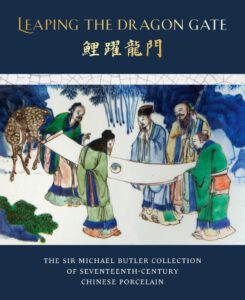
A catalog raisonné of the world’s most complete collection of seventeenth-century Chinese porcelain.
With six hundred stunning full-colour illustrations, this book celebrates the most important collection of seventeenth-century Chinese porcelain in the world, assembled by the distinguished British diplomat Sir Michael Butler (1927–2013). Butler’s lavish collection covers most types of porcelain produced at Jingdezhen, in Jiangxi province, during the seventeenth century.
This comprehensive volume features nearly all of the pieces in the collection, presented in sections featuring the main categories of porcelains in the collection: Late Ming, High Transitional, Shunzhi, Early Kangxi, Mid-Late Kangxi, Monochromes, and Famille Verte, as well as disputed pieces. An introduction by Katharine Butler tells the fascinating story of the circumstances that encouraged her father to acquire, collect, and passionately study Chinese porcelain of the seventeenth century; how he found rare pieces with dates, interesting inscriptions, seal marks, or narrative scenes; and how the collection and his scholarly publications came to be internationally renowned.
544 pages | 600 color plates | 9 3/4 x 11 3/4
Chinese and English Text.
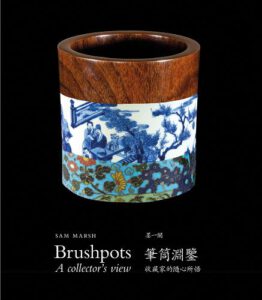
The Chinese title of this book reads “The Profound Reflection of Brushpots: A Collector’s Enlightenment” literally, citing reference to the book Imperial Profound & Reflective Encyclopedia commissioned by Emperor Kangxi of the Qing Dynasty, and The Collected Works of Long Ying, published during the reign of Emperor Wanli, Ming Dynasty. The word “Profound” was chosen meticulously to highlight the breadth and variety of the brush pots collected, and the proposition of their illustrations. The author’s intent to make this book an encyclopedia of brush pots was fairly explicit. On the other hand, “reflection” comes from a mirror, which shows how you look and who you are. It represented the collector’s experience in soul-searching and self-reflection during his journey of art appreciation.
Text in English and Chinese.
Publisher: CA Book Publishing
ISBN: 9789887440895
Number of pages: 288
Weight: 1626 g
Dimensions: 282 x 239 mm
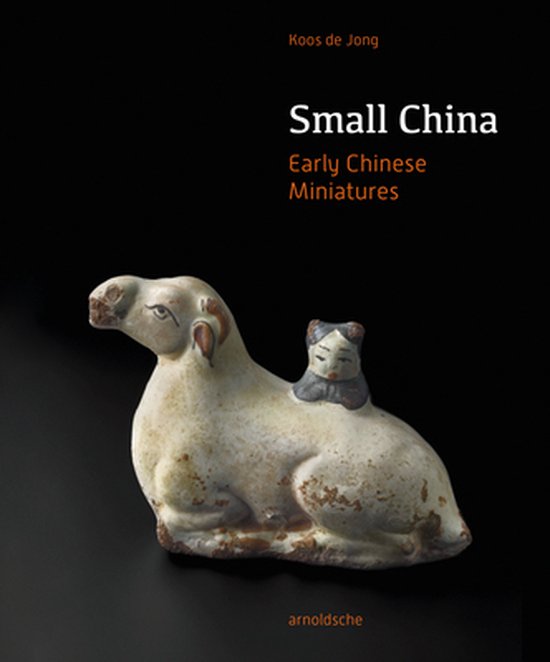
Small China presents Chinese miniatures from 5,000 BC up to the 15th century. The pocket size representations of supernatural beings, people, animals, or everyday objects are virtually uncharted in East Asian crafts – even in China, these objects in jade, bronze, ivory, and porcelain are little known. Koos de Jong explores their arcane meanings and traces their production and the market for such treasures, which, contrary to official secular and religious art, include those devoted to taboo subjects such as erotica or humour. The miniatures had many different functions, from insignia, fetishes and devotional objects to burial gifts or toys. They could express good wishes or even serve as bribes. A rare glimpse into the everyday life of ordinary people and into Chinese handicrafts from thousands of years ago.